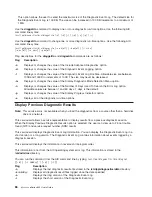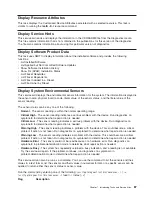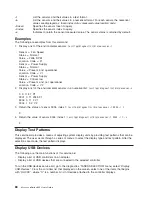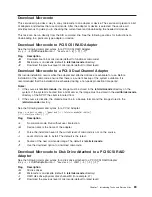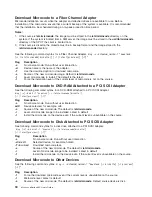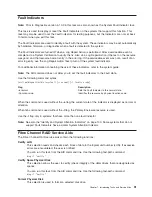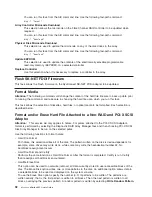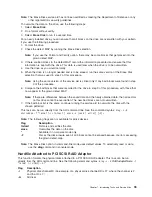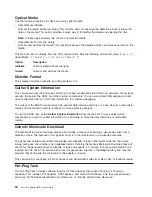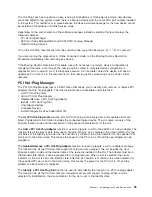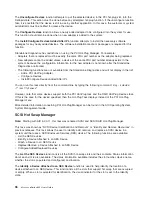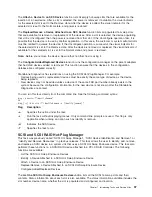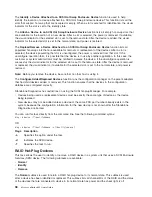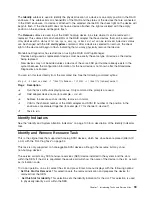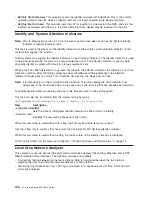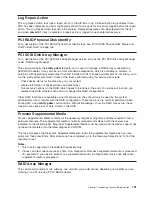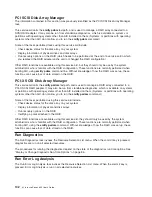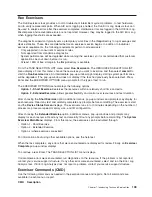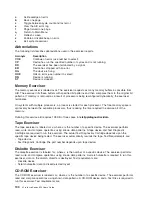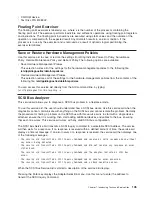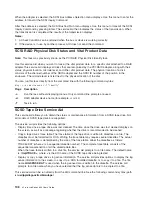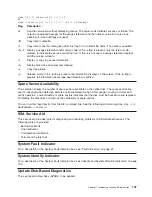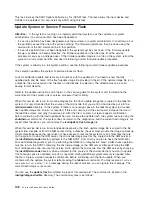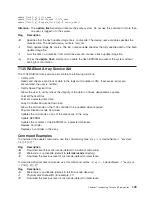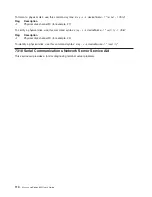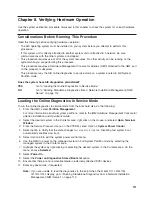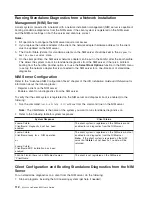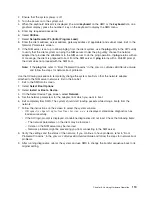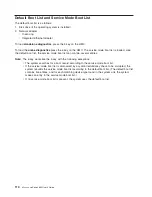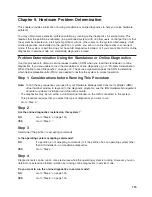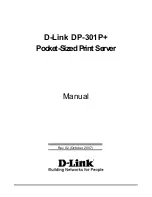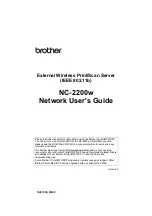
v
Set
this
Slot
to
Normal
.
This
selection
resets
the
identify
and
removal
indications.
This
is
the
normal
operating
state
of
the
slot,
when
no
identify,
removal,
nor
insert
operations
are
being
performed.
v
Set
this
Slot
for
Insert
.
This
selection
sets
the
slot
for
insertion
of
a
device
into
the
SES,
and
sets
the
indicator
associated
with
the
slot
to
the
state
indicating
that
a
device
may
be
inserted
into
that
slot.
Identify
and
System
Attention
Indicators
Note:
Prior
to
Diagnostics
version
5.1.0.35,
this
task
may
also
have
been
known
as
the
System
Identify
Indicator
or
Identify
Indicators
task.
This
task
is
used
to
display
or
set
the
Identify
Indicators
and
the
single
system
attention
indicator
on
the
systems
that
support
this
function.
Some
systems
may
support
the
Identify
Indicators
or
the
Attention
Indicators.
The
Identify
Indicator
is
used
to
help
physically
identify
the
system
in
a
large
equipment
room.
The
Attention
Indicator
is
used
to
help
physically
identify
a
system
with
a
fault
in
a
large
equipment
room.
When
a
fault
has
been
detected
on
a
system
that
supports
the
Attention
Indicator,
the
Indicator
is
set
to
an
Attention
condition.
After
the
failing
system
has
been
identified
and
the
problem
fixed,
the
Attention
Indicator
changes
back
to
normal.
This
should
be
done
by
the
Log
Repair
Action
Task.
Note:
It
is
important
to
run
the
Log
Repair
Action
function.
This
action
keeps
the
Fault
Indicator
from
going
back
to
the
Fault
state
due
to
a
previous
error
in
the
error
log
that
has
already
been
serviced.
For
additional
information
concerning
the
use
of
this
indicator,
refer
to
the
service
guide.
This
task
can
also
be
run
directly
from
the
command
line
by
typing
/usr/lpp/diagnostics/bin/usysident
[-s
{normal
|
identify}]
[-l
location
code
]
Flag
Description
-s
{normal
|
identify}
Sets
the
state
of
the
System
Identify
Indicator
to
either
normal
or
identify.
-l
location
code
Identifies
the
resource
by
physical
location
code.
When
this
command
is
used
without
the
-l
flag,
the
Primary
Enclosure
resource
is
used.
Use
the
-l
flag
only
in
systems
that
have
more
than
one
Identify
and
System
attention
indicator.
When
this
command
is
used
without
-s
flag,
the
current
state
of
the
identify
indicator
is
displayed.
For
more
information
on
the
tasks,
see
Chapter
7,
“Introducing
Tasks
and
Service
Aids,”
on
page
73.
Local
Area
Network
Analyzer
This
selection
is
used
to
exercise
the
LAN
communications
adapters
(Token
Ring,
Ethernet,
and
(FDDI)
Fiber
Distributed
Data
Interface).
The
following
services
are
available:
v
Connectivity
testing
between
two
network
stations.
Data
is
transferred
between
the
two
stations,
requiring
the
user
to
provide
the
Internet
addresses
of
both
stations.
v
Monitoring
ring
(Token
Ring
only).
The
ring
is
monitored
for
a
specified
period
of
time.
Soft
and
hard
errors
are
analyzed.
100
Eserver
pSeries
655
User’s
Guide
Summary of Contents for p 655 series
Page 1: ...pSeries 655 User s Guide SA38 0617 03 ERserver...
Page 2: ......
Page 3: ...pSeries 655 User s Guide SA38 0617 03 ERserver...
Page 10: ...viii Eserver pSeries 655 User s Guide...
Page 14: ...xii Eserver pSeries 655 User s Guide...
Page 16: ...xiv Eserver pSeries 655 User s Guide...
Page 24: ...6 Eserver pSeries 655 User s Guide...
Page 32: ...14 Eserver pSeries 655 User s Guide...
Page 36: ...18 Eserver pSeries 655 User s Guide...
Page 90: ...72 Eserver pSeries 655 User s Guide...
Page 144: ...126 Eserver pSeries 655 User s Guide...
Page 208: ...190 Eserver pSeries 655 User s Guide...
Page 214: ...196 Eserver pSeries 655 User s Guide...
Page 217: ......

